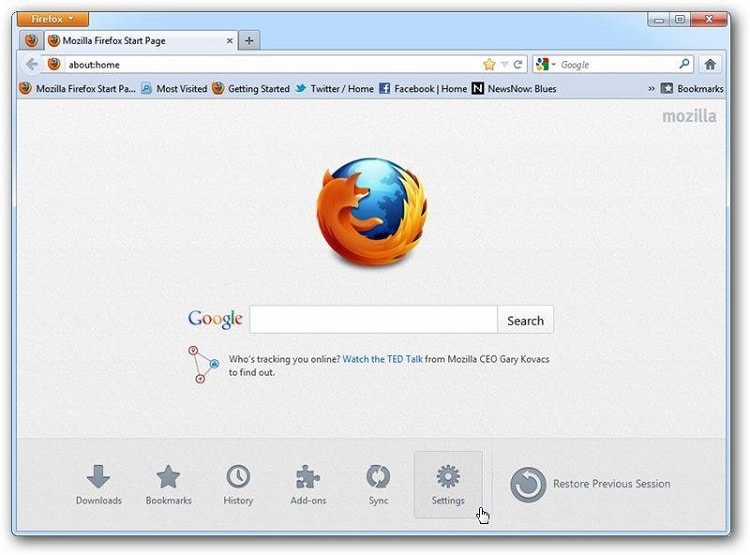

- #Update mozilla firefox for mac install
- #Update mozilla firefox for mac software
- #Update mozilla firefox for mac series
- #Update mozilla firefox for mac download
#Update mozilla firefox for mac download
In our example, imagine the download fails. To be perfectly honest, this script (as well as all the others we have built so far) is not complete yet.Ī ‘proper’ script needs to be able to react to errors that occur. We have been able to automate a fairly complex workflow with a script of four commands. You may also want to delete the existing copy of Firefox from the Applications folder, to be sure that your script is doing the work. If Firefox is running, you want to quit it before you run the script. This provides the last missing step in our script: #!/bin/zshĬp -R /Volumes/Firefox/Firefox.app /Applications/ Once the disk image is mounted, the cp command can be used to do this in the shell: > cp -R /Volumes/Firefox/Firefox.app /Applications/
#Update mozilla firefox for mac install
When you manually install Firefox the disk image shows you a nice graphic that reminds you to drag the app to the Applications folder. Hdiutil detach /Volumes/Firefox -force Copying the Application Hdiutil attach Firefox.dmg -nobrowse -readonly The hdiutil command covers two of our steps, so we can fill them in: #!/bin/zsh The -force option will unmount the disk image, even when another process is still using it. You can unmount or eject the virtual disk with > hdiutil detach -force /Volumes/Firefox > hdiutil attach Firefox.dmg -nobrowse -readonly Since we are only going to read from the disk image, we can tell hdiutil to mount the dmg in readonly mode with the -readonly option. We can suppress this behavior with the -nobrowse option. We do not really need the disk image to appear in Finder while the script is running. The last line ends with the path to the mounted virtual disk /Volumes/Firefox.īy default, you can see the mounted volume in Finder. This will output some information and mount the virtual disk. To mount a disk image, use the attach verb: > hdituil attach Firefox.dmg You can find all the detail in the hdiutil man page. This is also a very powerful command with many verbs and options. The command line tool to work with disk image (dmg) files on macOS is hdiutil. For that reason, I recommend using the long, descriptive options in scripts. But they are much less readable, and you usually have to look up their function in the documentation. Short options are convenient in the interactive shell, as they save typing and reduce the potential for typos. The short options for –location and –output are -L and -o. Note: Like many other command line tools, curl has short and long options. We can use this as our first step: #!/bin/zsh This command will download the latest Firefox disk image to a file named Firefox.dmg in your current working directory. To save the download to a file, we can use the -output option with a file name. We can tell curl to follow these redirections with the -location option.īy default, the curl command will output the download to standard out.
#Update mozilla firefox for mac software
This is a re-direction, that is commonly used to have a single URI, that is redirected to different final URIs, so that when the software updates, the same URI always returns the latest version. However, when you try to curl this URI, you only get the following: > curl "" The URI to download the latest Firefox is As always, you can find a detailed description of the curl command and its options in the curl man page. We will only discuss the few options that we require for our task here. The curl command is very complex and has many options. You can use the curl command to download data in the command line. This breaks the workflow into smaller pieces, that we will now tackle individually. # copy Firefox application to /Applications # downloads and installs the latest version of Firefox copy Firefox application to /Applicationsįrom this list of steps, we can build the first ‘frame’ of our script: #!/bin/zsh.When we want to automate the task ‘Download and Install Firefox,’ we have the following steps: Finally, they need to copy the Firefox application from the virtual disk to the Applications folder.

Then the user needs locate the dmg in the ~/Downloads folder and open it to mount the virtual disk image. To download and install the latest version of Firefox a user has to go to the Firefox website and download the latest version, which will come as a disk image (dmg) file. To further illustrate the progress from the idea of a workflow to a working script, let us look at another, more involved example. Enjoy!įollow this blog or the Twitter account for updates on the book’s progress! Download and Install Firefox
#Update mozilla firefox for mac series
This series is an excerpt from the first chapter of my upcoming book “Scripting macOS” which will teach you to use and create shell scripts on macOS.


 0 kommentar(er)
0 kommentar(er)
